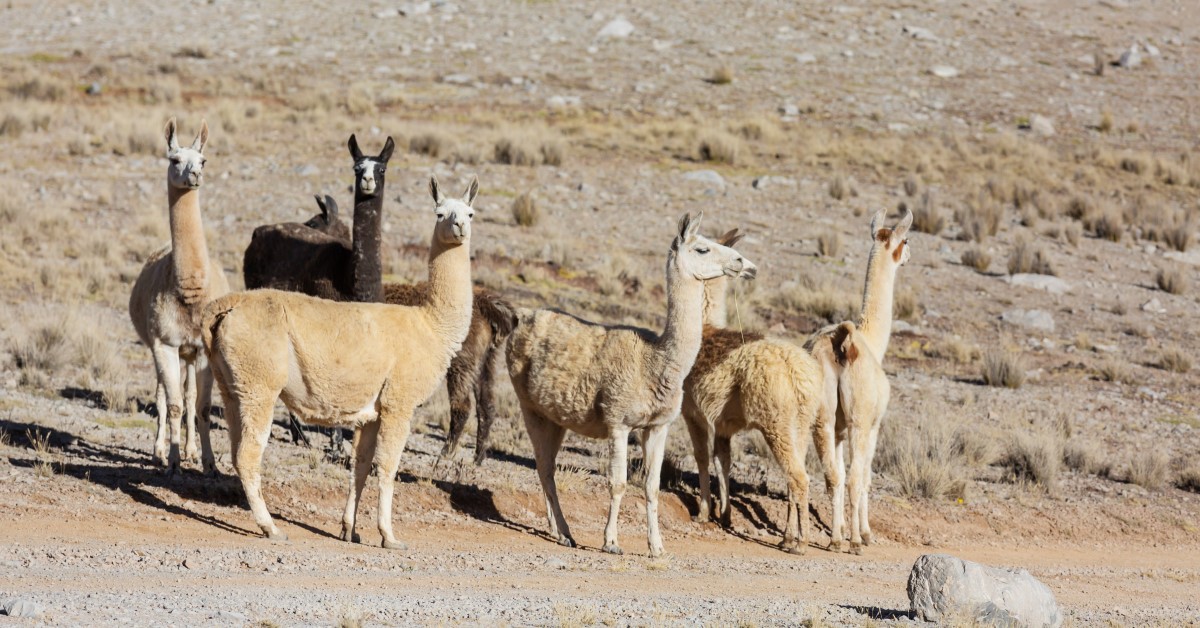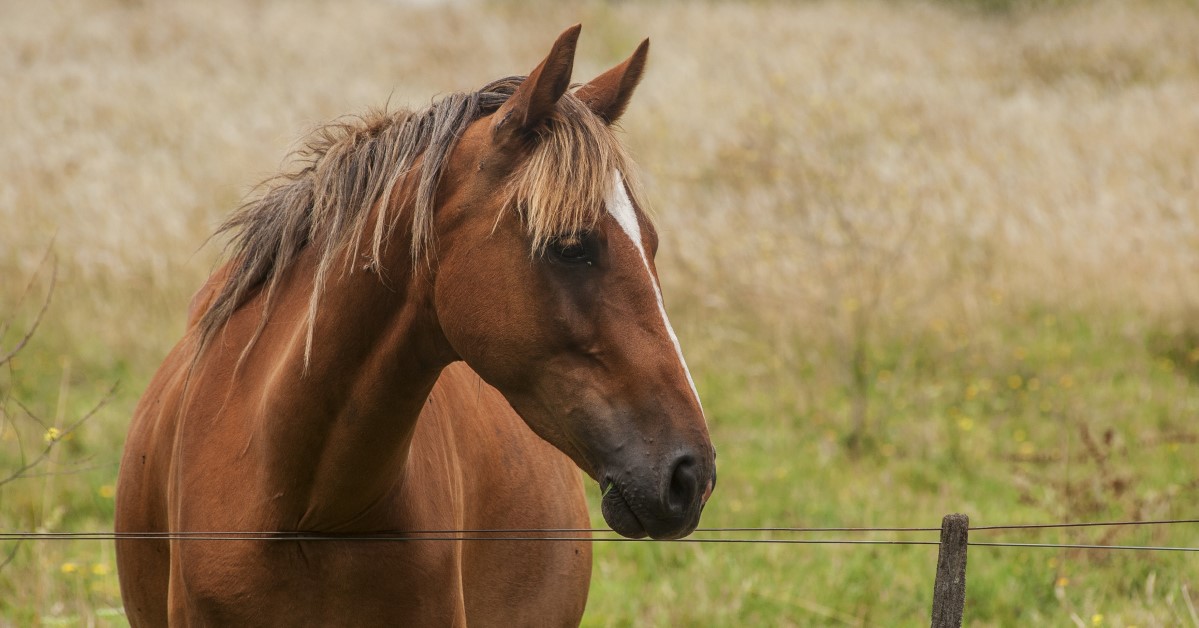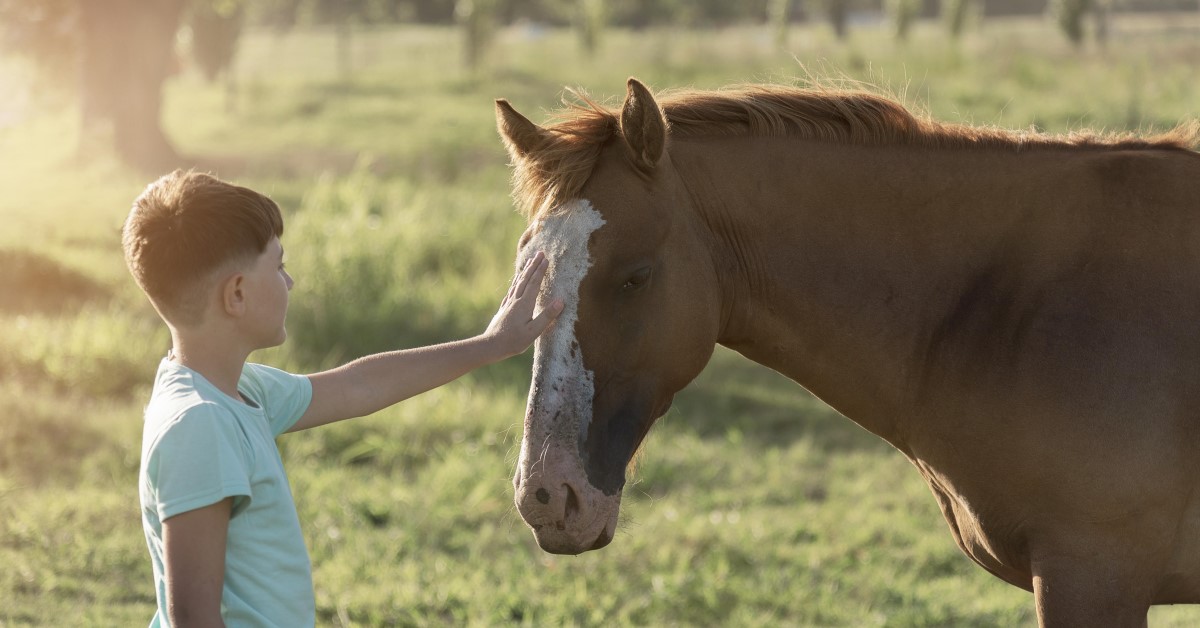From The Farm: How About A Pet Llama?
Llamas are growing in popularity due to their friendly disposition, mild manners and cleanliness.

Llamas are first and foremost pets and companions. They are ideally suited to this task because of their predictable low-key temperament, intelligence, and ease of maintenance. Llamas are becoming increasingly popular pets due to their mild manners, cleanliness, and friendly dispositions.
Llamas are generally healthy, thriving animals that require little maintenance beyond good basic care. However, before you decide to keep a llama as a pet, you will need to have a basic understanding of this animal and its particular needs:
- Determine if you have the right kind of property and accommodations to fit the needs of the llama. Llamas need plenty of room to run around and graze, as well as shelter to avoid extreme weather conditions. Your property must also be zoned for livestock.
- Consider whether you would be able to own more than one pet llama. These animals are extremely social and need the company of at least one other llama to thrive in their environment.
- Obtain a reliable source for llama supplies, such as food and grooming accessories. Llamas require a very specific diet to remain healthy, and wool shearing, toenail trimming, and general grooming practices are all a part of keeping your llama healthy.
- Find a veterinarian that is familiar with the care of llamas. Llamas require a very specific schedule for vaccinations, de-worming, blood tests, and health certifications. A qualified veterinarian will show you how to keep complete health records, which is essential if you want to own a llama.
- Locate a reputable breeder from whom to buy your llama. One of the best ways to find the right breeder is to contact the Alpaca and Llama Show Association (ALSA), which can recommend a breeder in your area. Attending ALSA shows and competitions is also an excellent way to meet breeders and find out about any llamas they might have for sale.
APPEARANCE
Llamas are 40 to 50 inches high at the withers and 60 to 72 inches tall at the poll. They weigh 18 to 31 pounds at birth and should weigh 250 to 300 pounds at full maturity. Female llamas reach mature size at 2 years of age, and males mature at 3 years. The average life span for llamas is approximately 20 to 25 years. Llamas have a long graceful neck and a relatively small head with large eyes and large curved ears.
Llamas are covered with wool approximately 3-to-8 inches in length and come in a variety of colors. Wool covers the neck, back, and sides of the animal while the head, underside, and legs are covered with short hair. A thick covering of wool enables llamas to withstand cold, wind, snow, and rain. Short hair elsewhere on the body enables the llama to dissipate heat when placed in warmer environments. Unlike sheep wool, llama wool does not have the protection of lanolin to make it water-resistant. Llamas have a tail that measures 12 inches in length at maturity. Llamas have characteristically high-cut flanks accented by a loosely hanging abdomen and a slightly forward-leaning carriage.
BEHAVIOR
Llamas are well-socialized, very friendly, and pleasant to be around. They are extremely curious and most will approach people easily. However, llamas that are bottle-fed or over-socialized and over-handled as youngsters will become extremely difficult to handle when mature because they will begin to treat humans as they treat each other, which is characterized by bouts of spitting, kicking, and neck wrestling. Anyone bottle-feeding a cria (baby llama) should keep contact to a minimum and stop as early as possible.
When correctly reared, spitting at a human is a rare thing. Llamas are very social herd animals, however, and do sometimes spit at each other to discipline lower-ranked llamas in the herd. A llama's social rank in a herd is never static. They can always move up or down the social ladder by picking small fights. This is usually done between males to see who becomes the alpha. Their fights are visually dramatic, with spitting, ramming each other with their chests, neck wrestling, and kicking, mainly to knock the other off balance. The females are usually only seen spitting as a means of controlling other herd members.
While the social structure might always be changing, they live as a family and take care of each other. If one notices a strange noise or feels threatened, a warning bray is sent out and all others come to alert. They will often hum to each other as a form of communication.
The sound of the llama making groaning noises or going "mwa" is often a sign of fear or anger. If a llama is agitated, it will lay its ears back. One may determine how agitated the llama is by the materials in the spit. The more irritated the llama is, the further back into each of the three stomach compartments it will try to draw materials from for its spit.
An "orgle" is the mating sound of a llama or alpaca, made by the sexually aroused male. The sound is reminiscent of gargling, but with a more forceful, buzzing edge. Males begin the sound when they become aroused and continue throughout the act of procreation—from 15 minutes to more than an hour
FEEDING
The feeding and care of your pet llama is fairly simple since llamas are hardy animals by nature and their feeding options are virtually unlimited. There are many commercially available diets for Llamas. Feeding you Llamas these commercial diets along with a variety of natural grasses, freshwater, and not much else they can live a normal life. They are relatively easy to feed in comparison to more common types of livestock. Here are helpful tips:
- Provide a clean, fresh supply of hay for your llama, unless you are keeping him in a pasture where he has access to plenty of grasses. Avoid feeding llamas grains and seeds unless you have a female llama that is either pregnant or lactating. Llamas will eat about 10 to 12 pounds of hay per day or about 2 to 4 percent of their body weight.
- Make sure your llama has plenty of freshwater every day. While llamas do not drink as much water as other types of livestock, an unlimited supply is essential for optimum health.
- Avoid overfeeding your llama. Like many animals, a llama will gorge itself if it has access to unlimited food supplies, especially grain.
- Supplement your llama's diet with a salt or mineral block. Look for free choice or pelleted mineral supplements instead of large blocks since llamas cannot lick. The mineral block should contain plenty of selenium, calcium, phosphorus, and salt.
- Add corn to your llama's diet, especially if the weather turns colder. This will help your llama to maintain its energy levels through the winter.
GROOMING
It might sound silly, but keep your llamas healthy. No amount of grooming can help an unhealthy llama shine. Feed your llamas a nutritious diet and provide them with proper care. This "grooming from the inside" will go a long way towards having llamas that look good on the outside. Llama grooming is very important, and it can also be a great way to bond with your llama. Here are some tips on how to groom llamas:
- Treat your llamas with love and compassion. These magnificent creatures will reward you with love in return and will be more likely to cooperate when it's time to be groomed. Give the llama frequent breaks if grooming seems stressful.
- Pay attention to what type of fiber your llama has. If your llama has locks of Suri fiber, you do not want to use a brush that will disturb the locks; however, you can be a bit more flexible with a silky type of fiber.
- Pull out any large debris from the llama's fur. Depending on the debris, you can use a pick, a wand, or your hands to do this.
- Give the llama a good blowout. Take a blower and blow just the surface of the fur in the direction that the fibers run to remove any additional small debris as well as dirt and dust. Once the fur is visibly clean, add a professional grooming product and blow a second time. Many llamas love a good blowout.
- Prepare to bathe. If your llama has Suri fiber, you will have to separate each lock one at a time. This can take quite a while. If the fur is matted, plan to spend significant time removing mats. Consider spreading the grooming process over the course of a few days. For other types of fur, brush the llama thoroughly.
- Bathe the llama. Use a high-quality shampoo followed by a high-quality conditioner, making sure the products are appropriate for the type of fiber the llama has.
- Hand-groom your llama. Squeeze out any excess water and then straighten the locks or fur with your fingers or an appropriate grooming tool. Then let the llama dry, making sure to place it in a place where getting dirty again is unlikely. Consider a leave-in treatment. If you would like to keep your llama's hair looking soft and shiny, use a leave-in conditioner. If you really want your llama to shine, use a finishing spray or add a grooming ointment to the face.
HEALTH
Llamas are quite hardy, although they are susceptible to many diseases and parasites as cattle and sheep. The most notable disease which infects llamas is enterotoxemia, "overeating disease," types C and D. This disease most often infects young llamas or crias. Veterinarians report success in decreasing the incidence of enterotoxemia through immunization of the female and subsequent immunization of young at 4 to 6 weeks of age. Llamas may also be subject to tuberculosis, Johne's disease, anthrax, malignant edema, and tetanus.
Llamas can be infected with internal and external parasites. Internal parasites include gastrointestinal nematodes, lungworms, meningeal worms, tapeworms, and flukes. These parasites can be eliminated with medicines currently used to treat cattle and sheep. External parasites (ticks, mites, and lice) can be treated with pesticides approved by your veterinarian.
Medically Reviewed by Sara Ochoa, DVM
Ready to start saving money on pet wellness care?
Then take a look at Mint Wellness, the pet wellness plan that provides fast reimbursement on routine pet care. Save on vaccinations, wellness exams, preventatives, dental, and more!
Learn More

